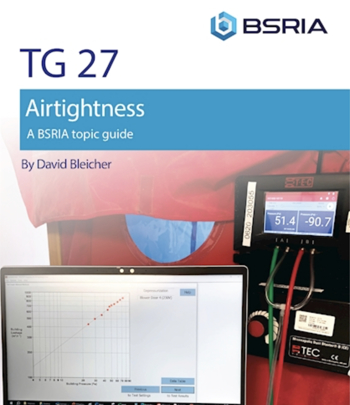What is an Air-Handling Unit? Unveiling the Significance of AHUs.
File:What-is-an-Air-Handling-Unit-min-1024x677.png
Contents |
[edit] Introduction
In the realm of heating, ventilation, and air conditioning (HVAC) systems, there exists a crucial component that often goes unnoticed, yet it plays a pivotal role in ensuring indoor comfort and air quality. This unsung hero is the Air-Handling Unit (AHU). In this blog, we will demystify the concept of AHUs, exploring what they are, how they work, and why they are essential in HVAC systems.
[edit] What is an Air-handling unit?
An Air-Handling Unit, abbreviated as AHU, is a central component of HVAC systems designed to regulate and circulate air within a building. It serves as a mechanical system that conditions, filters, and circulates air to maintain a comfortable indoor environment. AHUs are typically found in commercial buildings, industrial facilities, and even in some residential HVAC setups.
Components of an AHU:
- Blower or Fan: The blower or fan is responsible for drawing in air from the surroundings and then pushing it through the AHU system.
- Filters: Filters are crucial in removing impurities, such as dust, pollen, and contaminants, from the incoming air, ensuring cleaner, healthier indoor air quality.
- Heating and Cooling Coils: These coils can either heat or cool the air as needed, depending on the desired indoor temperature. They are typically connected to a boiler for heating and a chiller for cooling.
- Humidifier/Dehumidifier: Some AHUs have a humidifier to add moisture to dry air or a dehumidifier to remove excess moisture from humid air, maintaining optimal humidity levels.
- Mixing Chamber: The mixing chamber allows for the blending of outdoor and return air to achieve the desired temperature and humidity levels.
- Ductwork: AHUs are connected to a network of ducts that distribute conditioned air to different parts of the building.
- Control Panel: This is the brain of the AHU, where sensors and controllers monitor and regulate the air quality and temperature based on user settings and feedback.
[edit] How does an AHU work?
Certainly! An Air-Handling Unit (AHU) functions as the core component of an HVAC system by carefully regulating and conditioning the air circulated within a building. The process begins with the AHU drawing in ambient air from outside, as well as recirculating indoor air through return ducts. The incoming air is then subjected to a series of crucial treatments.
- First, it passes through filters that effectively remove dust, allergens, and other particulate matter, significantly improving indoor air quality.
- Subsequently, the air flows over heating or cooling coils, depending on the desired indoor temperature, enabling precise thermal control. Some AHUs also incorporate humidifiers or dehumidifiers to adjust moisture levels as necessary.
- In the mixing chamber, the treated outdoor and return air are carefully blended to achieve the exact conditions required.
- Finally, the conditioned air is distributed through a network of ducts to various rooms and areas within the building, ensuring that occupants enjoy a comfortable and healthy indoor environment.
[edit] Why are AHUs essential?
Air-handling units (AHUs) are indispensable for several compelling reasons. Firstly, they are engineered for energy efficiency, optimising heating and cooling processes to potentially reduce energy costs.
Secondly, AHUs make a significant contribution to indoor air quality by filtering and conditioning the air, effectively reducing allergens and contaminants. Their pivotal role in maintaining comfortable indoor temperatures and humidity levels ensures occupant comfort, which is crucial for productivity and well-being. Moreover, AHUs provide controlled ventilation, facilitating the removal of stale air while introducing fresh outdoor air, thereby promoting a healthier indoor environment.
Lastly, their adaptability through customisation allows AHUs to be tailored to specific building requirements, making them versatile and effective in diverse environments.
[edit] Conclusion
Air-handling units may not be the most conspicuous components in HVAC systems, but they are undoubtedly the heart of these systems. They work tirelessly behind the scenes to ensure that indoor environments are comfortable, clean, and healthy. Understanding the role of AHUs in HVAC systems is essential for anyone interested in maintaining optimal indoor air quality and comfort. So, the next time you step into a temperature-controlled building, you'll know that an AHU is hard at work, silently ensuring your comfort.
Featured articles and news
A change to adoptive architecture
Effects of global weather warming on architectural detailing, material choice and human interaction.
How big is the problem and what can we do to mitigate the effects?
Overheating guidance and tools for building designers
A number of cool guides to help with the heat.
The UK's Modern Industrial Strategy: A 10 year plan
Previous consultation criticism, current key elements and general support with some persisting reservations.
Building Safety Regulator reforms
New roles, new staff and a new fast track service pave the way for a single construction regulator.
Architectural Technologist CPDs and Communications
CIAT CPD… and how you can do it!
Cooling centres and cool spaces
Managing extreme heat in cities by directing the public to places for heat stress relief and water sources.
Winter gardens: A brief history and warm variations
Extending the season with glass in different forms and terms.
Restoring Great Yarmouth's Winter Gardens
Transforming one of the least sustainable constructions imaginable.
Construction Skills Mission Board launch sector drive
Newly formed government and industry collaboration set strategy for recruiting an additional 100,000 construction workers a year.
New Architects Code comes into effect in September 2025
ARB Architects Code of Conduct and Practice available with ongoing consultation regarding guidance.
Welsh Skills Body (Medr) launches ambitious plan
The new skills body brings together funding and regulation of tertiary education and research for the devolved nation.
Paul Gandy FCIOB announced as next CIOB President
Former Tilbury Douglas CEO takes helm.
UK Infrastructure: A 10 Year Strategy. In brief with reactions
With the National Infrastructure and Service Transformation Authority (NISTA).
Ebenezer Howard: inventor of the garden city. Book review.
Airtightness Topic Guide BSRIA TG 27/2025
Explaining the basics of airtightness, what it is, why it's important, when it's required and how it's carried out.





















